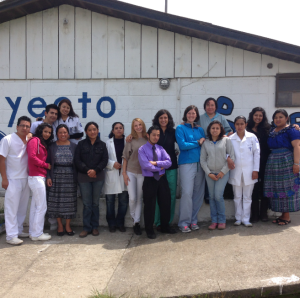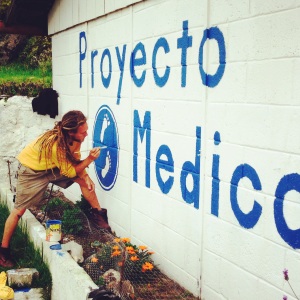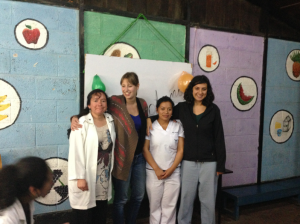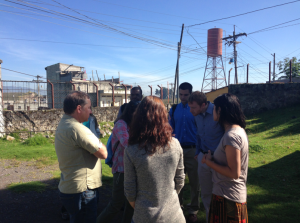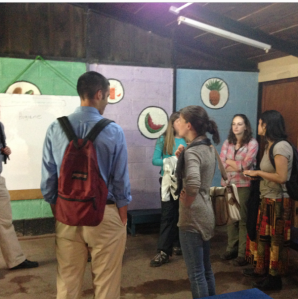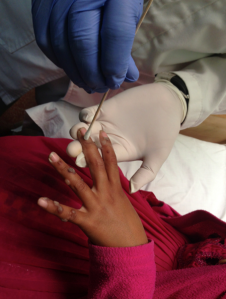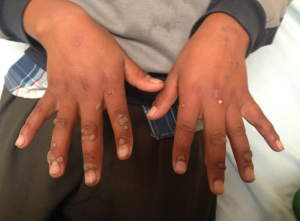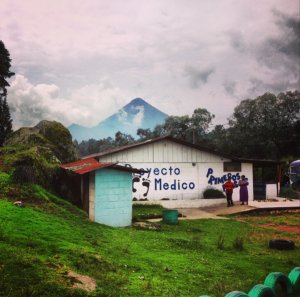So I have officially completed my first month in the clinic!! Its been a pretty steep learning curve but I am finally getting the hang of how things work in the clinic and am able to be an effective member of the team. Before I go into my experience more,a little bit about the health care system here in Guatemala:
In comparison to what I have seen in Mexico, the healthcare system in Guatemala is much less developed. While they have a universal system, up to 40% of the population has no access to care. The system is divided into 3 sectors: Public, private non-profit and private for-profit. The public sector is run by Minesterio de Salud Publica y Asistencia Social (MSPAS) which provides health care services through facilities ranging from primary care service to tertiary hospitals. Services are free of charge at these facilities.
The Private non-profit sector is monitored but not under direct control of MSPAS. The Integrated Health Care System (SIAS) contracts with private providers to provide healthcare in remote rural areas that have no access to health facilities. Each private provider is services approximately 10,000 residents. Next there is IGSS (Guatemalan Social Security Institute) which covers government employees that pay into the system. Finally, the private for-profit sector, which is largely unavailable to the general population because of its high costs.
The clinic that I am working at in completely funded by donations, but does receive informational pamphlets and contraceptives from the Ministry of Health. We have one physician and 6 local medical students. I am currently one of two foreign medical student working at the clinic. The medical students here have much more responsibility that those in the US. They run clinic rooms on their own, prescribe medications, and deliver educational plans. I have heard from other students that have visited the public run institutions and many of them have only one medical student as the “doctor”. It’s phenomenal the amount of responsibility placed on students. During my first week I was completely overwhelmed. In the US, I had never written a prescription or seen patients without the oversight of a physician. By the 4th week I was starting to feel more confident in my abilities to see patients on my own with a fellow Guatemalan medical student, but also felt secure that there was a doctor in the room next door in case I had any questions.
The 5th week of my time here was probably the steepest learning curve for me. The clinic got a whole new group of Guatemalan medical students and the doctor wanted me to help train them in how the clinic worked. Even though I had spent the last four months at the clinic, I was still struggling in writing proper notes in spanish and other basic things. However, I was surprised at how much I had learned that month and was able to teach other other medical students. I am excited to keep learning!!
One of the major things that I have noticed in the clinic is the lack of a really strong method of data collection. Each patient that is seen has a folder, and the folders are kept in large file cabinets. The sheets that the histories are written on are very simple and include history, physical, diagnosis, and treatment. If files are misplaced, a new folder is made without any reference to previous notes. I have had a significant amount of patients that I thought were “new patients” but that just had their folder misplaced which makes it harder for quality longitudinal care. In addition, lake of a sufficient system of data collection makes doing any sort of research almost impossible. A few years back the clinic had a volunteer that had set up a network so that the clinic was wired for an electronic system, but there was one problem: They were not able to afford computers! I have made it one of my goals during my time here, along with another foreign medical student from UVA to try to get refurbished computers from the US to this health clinic. That is definitely the first step to improving data collection, and a result being able to get sufficient data for research projects that can improve patient outcomes in the clinic.
Finally, during my time at the clinic I was able to spend one day with the education program, but more on that in another entry. Also, super interesting, one week we had a group form the US from Engineers Without Borders come visit the clinic in hopes of one day setting up a water sanitation system! Hope this was interesting! Pictures below of more of my time in the clinic! Till next time!!
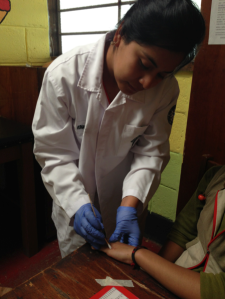
Every Friday, a local medical student brings liquid nitrogen to freeze warts. Shown here is Guatemalan Medical Student Ceci freezing warts
